Is air sealing worth it? Definitely. Air sealing your house can save you money and create a healthier, more comfortable home. Here’s why.
Have you wondered if it’s worth it to add “air sealing house” to your project to-do list? You absolutely should.
Plenty of homeowners don’t know the huge impact that air sealing can have on the comfort of their house—and some even worry that too much air sealing will make their home stuffy or unsafe. (Spoiler: That’s not true.)
Not to worry. In this homeowner guide, you’ll cover common air sealing questions—including what air sealing is, if air sealing is worth it, and what air sealing a house costs.
(Plus, you could get air sealing and insulation upgrades for $0 upfront if your house qualifies. Tap here to find out.)
Table of contents:
- What is air sealing?
- Why should you air seal your home?
- How and why your attic is a big part of the problem
- Where should you air seal in your house?
- Does air sealing make your home too stuffy or make you sick?
- Is air sealing worth it?
- What does air sealing a house cost?
- What air sealing techniques do professionals use?
- FAQs about air sealing
- Can you air seal your house yourself?
- How to get air sealing at no upfront cost
Key points:
- Open gaps and seams, called air leaks, allow cold or warm air from outside to enter your home through window frames, exterior doors, uninsulated rim joists, your attic, and more. Air sealing fixes this issue.
- Along with insulation, air sealing is one of the most important things you can do to improve your home’s comfort, health, and energy efficiency—but it’s often overlooked by both homeowners and even some contractors.
- Whole-home air sealing is more than just caulking in your attic. Home professionals use specialized blower door tests, sealants, foam gaskets, and more to close up open gaps and seams in your home. It’s science!
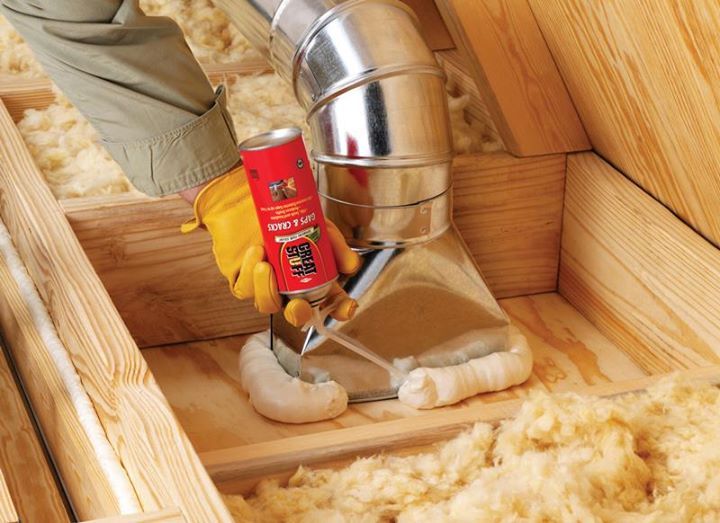
What is air sealing?
Air sealing is the process of locating—and then sealing—all the nooks, crannies, gaps, and open seams throughout your home (and, trust us, you probably have a lot more gaps than you think—more on that later).
A professionally-sealed home will have beautifully regulated air flow—it’ll be less stuffy in summer and less drafty in winter.
Air sealing can also:
- Improve your home’s overall air quality
- Reduce humidity in your house
- Increase the health and comfort of your home
- Reduce the energy used by your heating and cooling equipment
- Lower your energy bills
Air sealing has many benefits—but it’s also highly technical, specialized work that takes place in some hard-to-reach parts of your home.
So you’ll get the best, most effective results when it’s performed by an experienced professional.
Why would you need to air seal your home?
Every house needs healthy airflow.
Natural airflow helps prevent the buildup of mold and mildew throughout your house, and mechanical airflow (like the vent from your furnace) prevents unwanted—and sometimes even dangerous—air from remaining trapped in your house.
The trouble is that many houses, especially older ones, have problems with excess airflow.
Gaps and cracks in your foundation and attic, along with open seams around your fireplace flue, outlets, and joists, create little pathways for air to travel through. Discover how to find air leaks in your house here.
Individually these holes might be tiny—maybe the size of a dime or even smaller—but they add up to a big problem.
In fact, we’ve found through our audits of thousands of homes that many houses exchange air at 3–4 times the rate that is necessary; it’s like having an extra window open in your house 365 days a year.
That’s a lot of wasted energy (and it’s also inviting moisture and allergens directly into your home).
Sealed’s home energy audits find that many houses exchange air at 3–4 times the rate that is necessary; it’s like having an extra window open in your house 365 days a year.
That’s where air sealing comes in.
Air sealing solves the problem of excess airflow to ensure your house has all the fresh air you need—but without making you uncomfortable or wasting energy.
It also keeps excess moisture out, which protects the structural integrity and the overall health of your home.
Air sealing attics—one of the biggest culprits to unwanted airflow
One of the biggest reasons to air seal and insulate your home is right above you—in your attic and ceilings.
There’s a good chance that a lot of heat—as much as 30% to 50% of your home’s heating energy, in fact—is going right up through the attic floor (1)!
That’s because as heat rises in an under-insulated and unsealed home, it slips through all the little gaps in the ceiling and escapes through the top of the house.
What’s even more alarming is, as all that heat is escaping through the roof, it creates a “giant vacuum effect” which actively sucks cold air in from the outside—causing windows, doors, and other entryways to feel draftier than they actually are.
If you’ve ever noticed cold air streaming into your home on a winter day, that’s why: It’s being actively pulled into your home from the vacuum left behind by all the escaping hot air (you know, heat that you paid for).
To interrupt this process, you need to do everything possible to keep heated air from rising up and out of your home.
Air sealing your home paired with high-quality insulation is the best one-two punch to make that happen. Read Why is my upstairs so hot to learn how air leaks contribute to uneven temperatures in the home.
Air sealing your attic and attic insulation upgrades go hand in hand
Ultimately, air sealing and insulation work best when they work together as a team.
- Insulation works like a down lining in a winter coat, helping lock in warmth in the winter and cool air in the summer.
- Air sealing is like the wind-breaker layer of the coat, stopping excess airflow from entering the house.
If your house is heavily insulated but lacks proper air sealing, your insulation won’t have the same weather-stopping power.
Plus, having a lot of insulation without proper air sealing can create secondary problems like mold and mildew buildup.
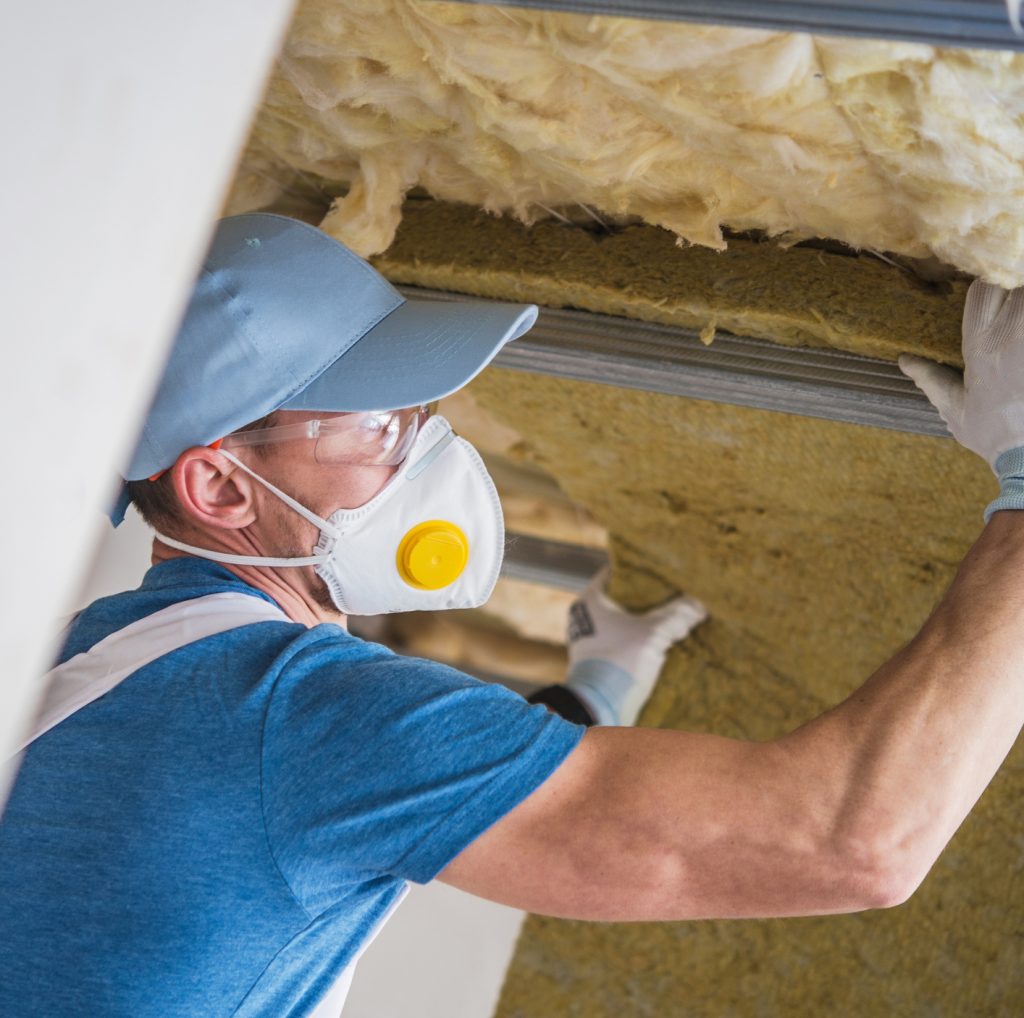
Can you air seal your home without adding insulation?
Yes, but they’re usually done together—and for good reason.
Air sealing is incredibly beneficial and most houses need it—but if you air seal a home that isn’t properly insulated, you won’t be able to fully regulate the temperature in your home.
(The best-sealed house in town will still be stuffy in the summertime if its insulation is 100 years old!)
If you air seal your home without proper insulation upgrades, you might be leaving the job half done. And it’s not easy to correctly air seal without removing old, expired insulation first.
Where should you air seal in your house?
The short answer: Everywhere there’s a gap.
When Sealed air seals houses, we do a thorough review of the home.
But the two biggest culprits when it comes to unwanted air exchange between indoor and outside air are:
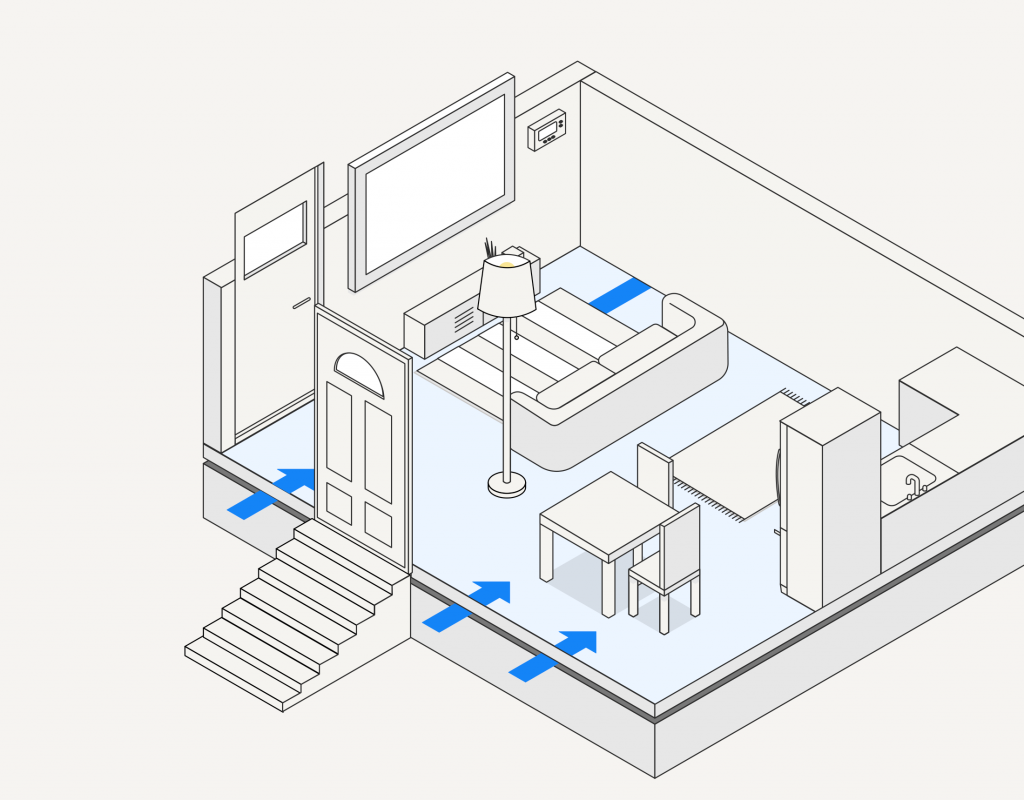
Foundation air sealing
As your home ages, small gaps and crevices begin to develop in and around your foundation, which foundation air sealing works to resolve.
These openings are a prime source of excess air flow and drafty winter days, so they’re one of the first areas we tackle when air sealing a home.
When Sealed does the work, we also seal the wooden beam around the perimeter of your foundation so it’s protected from unwanted air entry.
(Bonus: This work also helps keep out tiny bugs, dust, and excess moisture!)
Attic air sealing
Duct work, electrical wiring, plumbing, bathroom vents, and even recessed lighting fixtures create pathways for unwanted airflow—resulting in the giant vacuum effect that sucks cold air into your home in winter or warm, humid air in summer.
Attic air sealing solves these issues by plugging the holes with expanding spray foam. That way, excess air can no longer pass through.
It’s pretty much magic.
(For recessed lighting, the fixtures are capped from above with fire-retardant boxes and sealed around the edges.)
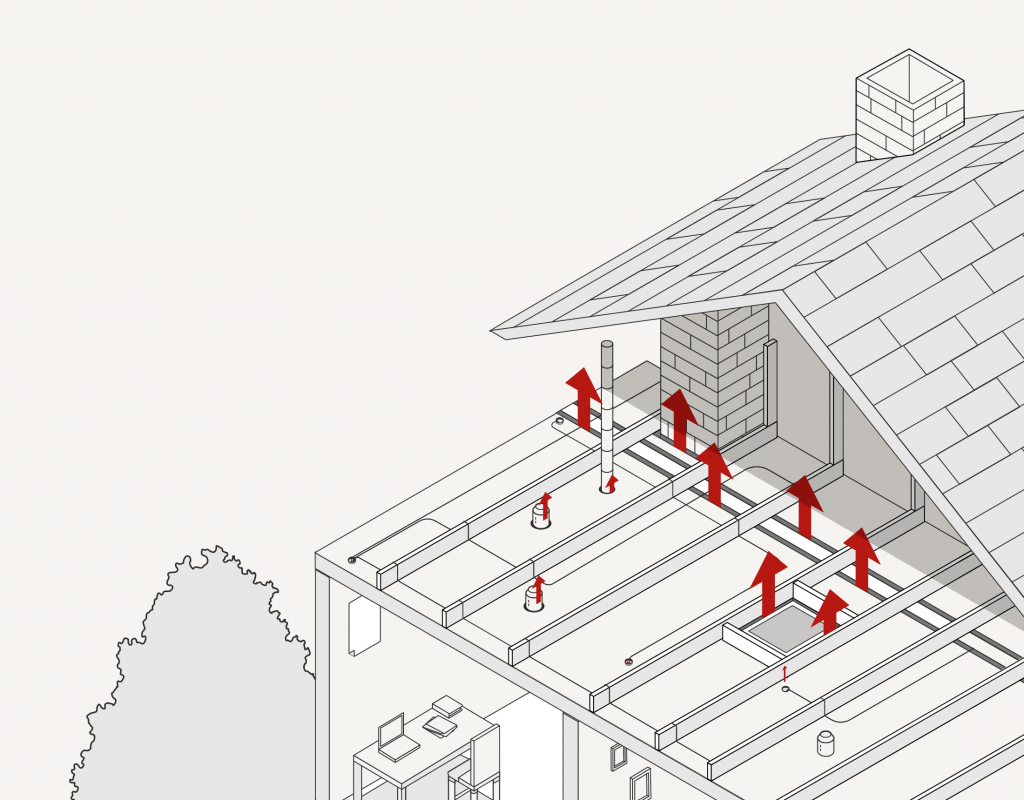
Whole-house air sealing: What about other areas?
Leaky windows and doors can also be a source of excess airflow, especially in older homes.
At Sealed, we tackle this problem with another form of air sealing called weatherstripping.
It’s a quick, easy install—and far more cost-effective than replacing the windows and doors themselves.
Further reading: Do you need new windows? Probably not.
4 common air sealing myths
- It will make your home stuffy.
- It causes too little air flow throughout the home.
- It causes moisture problems.
- It causes sickness in your household if your home is too airtight.
Myth 1: Air sealing can make your home too stuffy.
Many homeowners worry that air sealing can make their house too stuffy or prevent healthy airflow. Not true!
In fact, rather than causing stuffiness, air sealing prevents it.
Without air sealing, warm, humid air can be drawn into your house in summer. In winter, a house without proper air sealing can be freezing on the first floor, and an inferno upstairs.
An important caveat: It is possible to take air sealing too far—it’s called over-tightening. But let’s dig into that myth next.
Myth 2: Air sealing causes too little air flow throughout the home.
This is also a common myth. Houses built very recently (with a lot of insulation and air sealing already in place) are at some risk of over-tightening without proper ventilation.
However, houses built in the 20th century or earlier often have so much excess airflow that there’s plenty of opportunity to air seal while still maintaining healthy circulation.
While over-tightening your home is definitely something to be avoided, it’s just not the big problem that people think it might be—especially in older homes, and as long as you hire a trained professional.
(Frankly, we’ve found that over-tightening is rarely, if ever, an issue with the homes that we service. Our experts know what they’re doing.)
But you don’t have to take our word for it.
The Building Performance Institute, the governing body that certifies expert home performance contractors we use at Sealed, has clear guidelines and mathematical formulas for preventing over-tightening with air sealing.
We follow these standards on every project at Sealed.
Myth 3: Air sealing causes moisture problems.
Another myth here!
It’s actually the opposite: Air sealing helps resolve moisture issues throughout your home when done correctly. Most of the harmful moisture getting in comes from outside air.
Working with the right contractors who know how to properly air seal and keep outside air out is crucial: If air sealing is done improperly, it can cause moisture and ventilation issues.
And this is most likely where this myth originates from.
Myth 4: Air sealing causes sickness in your household if your home is too airtight.
Absolutely not. Air sealing increases the overall air quality and health of your home when done properly and by experts.
Again, it’s technically possible for a home to be over-tightened (especially in newer builds), but when working with a professional, this is unlikely.
Is air sealing worth it?
Yes. Getting your home air sealed is a worthwhile investment—one that pays off in energy efficiency, comfort, and your home’s value.
According to Energy Star, the EPA estimates savings of 15% on heating and cooling costs by properly air sealing and adding insulation (2). And one study found homeowners could cut up to 45% of their energy waste in an existing home with the strategic air sealing and insulation upgrades (3).
But the value goes beyond dollars and cents.
It’s no fun to be uncomfortable in your own house, and air sealing can go a long way toward making your home feel—well, like home. It’s a draft-stopping solution that makes your home feel better year round.
Hear directly from customers we worked with to air seal their home:
I didn’t realize the basement leakage was as bad as it was—we always had one spot in the front of the house around the baseboard that we could always feel a draft but we could never find it…well the team from Sealed found it. They were fantastic.
Paul and Kay K.
Air sealing house cost
The typical home air sealing and insulation project could be valued between $5,000 and $12,000 when done properly.
(And yes, most air sealing projects also include insulation—the two strategies work together!)
That said, the cost of air sealing varies, depending on:
- The size of your house
- Where your house is located
- The extent of the project (if attic, foundation, and whole-house air sealing is needed)
The cost of air sealing also depends on what rebates and assistance are available from your local energy or utility companies. Check out our Weatherization Rebates or Home Energy Rebates guide to learn more.
The state of New York, for example, offers a variety of financial assistance programs to residents who need home energy audits or energy-efficiency upgrades.
Air sealing techniques: Here’s what the pros do
First, you’ll get an audit. It’s not easy to spot air leaks with the naked eye.
Certified home performance contractors use tools such as thermal imaging detectors and blower door tests to inspect your home, basement, attic, and foundation for air leakage.
It’s specialized—and unglamorous—work: Air sealers need to get into crawl spaces, climb into dusty attics, and squeeze into the darkest basement corners in order to do their job right.
Then, once the pros determine the airflow trouble spots in your home, they’ll air seal your home with a variety of methods. (Expanding spray foam is one of the most common materials used.)
Certified home performance contractors are the only people we’d trust with the important work of air sealing—and they’re the folks we’d recommend even if you choose not to work with us.
Get expert home air sealing and insulation—with an energy-savings guarantee
Want to learn more about air sealing? Think your house might have too many air leaks?
We’d be happy to help—this is what we do.
And, depending on where you live, you may be able to get professional home air sealing, insulation, HVAC, and weatherization upgrades completed at no upfront cost with an energy-savings guarantee.
Give us a call at 914-382-3729 to speak with one of our experts.
Or complete our quick (and easy!) questionnaire to see if you qualify to get energy efficient home upgrades at zero upfront cost with Sealed.
Home air sealing FAQs
Here are a few common questions we hear about air sealing. Don’t see your question here? Contact the experts at Sealed.
- Can you air seal your house yourself?
- Can air sealing increase home value?
- How do I know if I need whole-home air sealing?
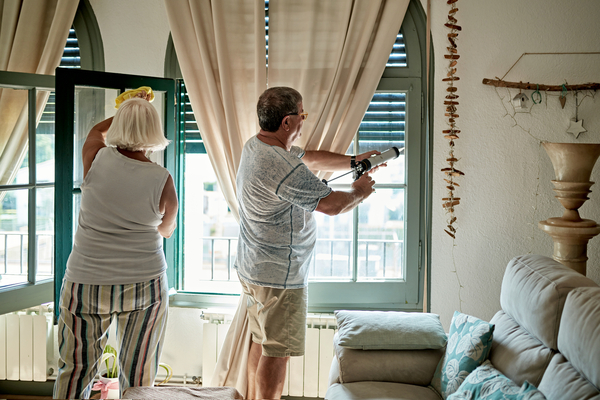
Can you air seal your house yourself?
Air sealing is easy to get wrong if you don’t know what you’re doing. Technically, you could try. But it’s not recommended.
We might be a bit biased (we’re air sealing experts, after all), but the plain truth is that air sealing is highly technical, time-consuming work that requires technical expertise as well as in-depth knowledge of the way air moves through homes.
Air sealing professionals get plenty of on-the-job training and experience before they show up at your door. (Sealing a home properly also takes time and persistence.) And it’s easy to get wrong if you don’t know what you’re doing. Remember that open window we talked about earlier in this guide?
When air sealing is done incorrectly—even by the most enthusiastic and confident home-project DIYer—you’ll still have two-thirds of a window open 365 days a year. At that point, you’ve lost time and money, while still not resolving the excess airflow issues in your home.
Moral of the story: Consult a professional for home air sealing. It’s worth it.
Can air sealing increase home value?
Air sealing can increase your home’s value because energy efficiency is a growing priority among homebuyers.
In fact, a survey conducted by the National Association of Homebuilders showed that buyers are willing to pay an additional $8,728 upfront on a home in order to save $1,000 a year in utility bills (4).
And ultimately, 91% of home buyers prefer an energy-efficient certified home—that’s an overwhelming majority (5).
So, yes—energy-efficient home improvements matter. Air sealing and attic insulation upgrades can also make a big difference in your home’s attractiveness to buyers.
(And if you want to sell an older home, taking steps to upgrade your energy efficiency before you put it on the market is important—especially if you’re competing with newer homes.)
How do I know if I need whole-home air sealing?
It’s possible to try to audit your own home, but it’s rarely a good idea.
The professionals know what they’re looking for, they have the right equipment and knowledge to figure out exactly where your energy dollars are going, and they’re willing to crawl into all the least-comfortable places in your home to get the job done right.
(Not a small benefit, as anyone who has ever been in an unused attic or crawled through tiny attic access doors can verify!)
Ultimately, hiring a professional is worth the investment.
And if you go with Sealed, your home energy assessment is automatically included. We’ll vet and hire a high-quality home performance contractor who fits your project needs best—and then we stand behind their work 100%.
You can rest easy, because you’ll know it’s done right.